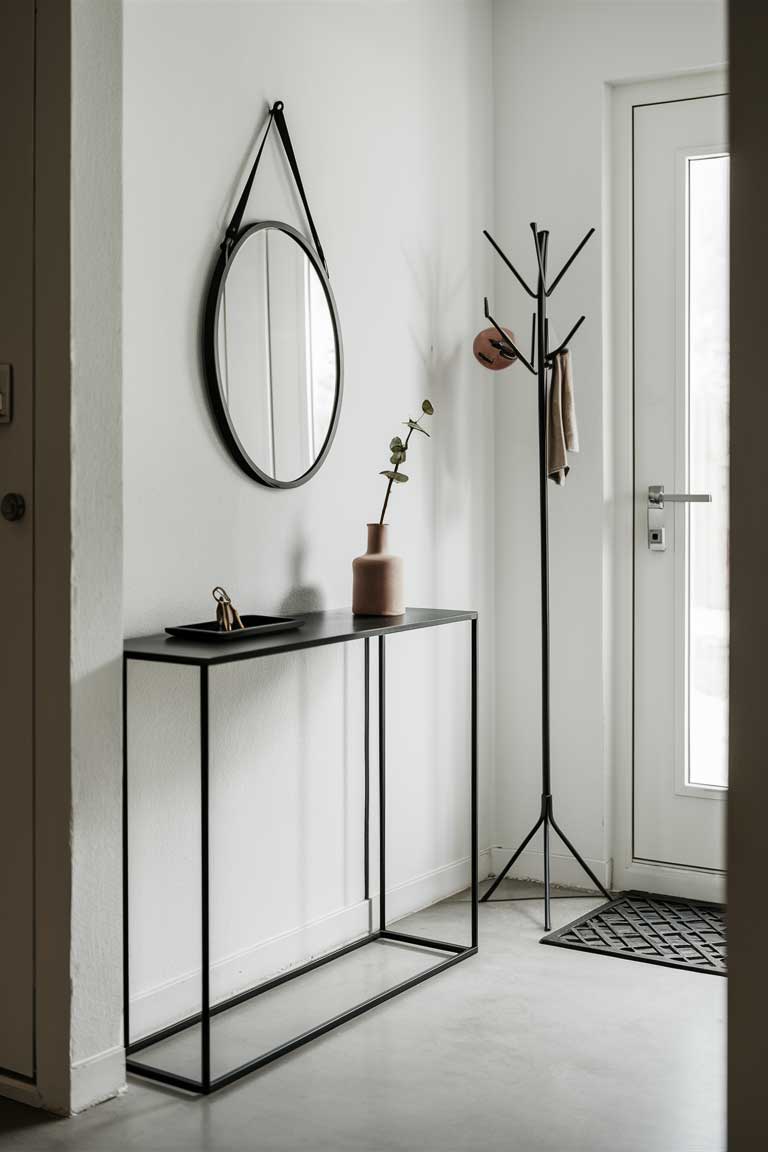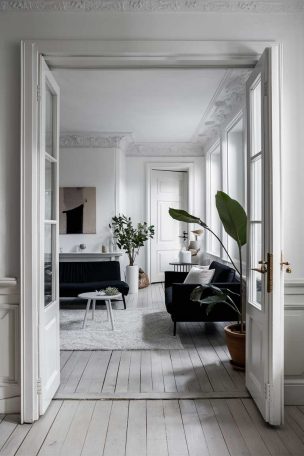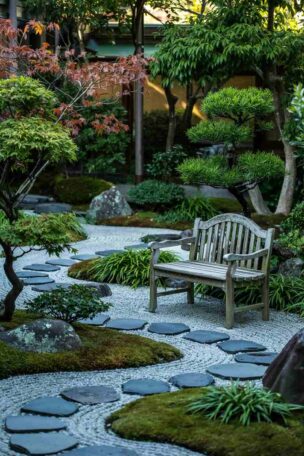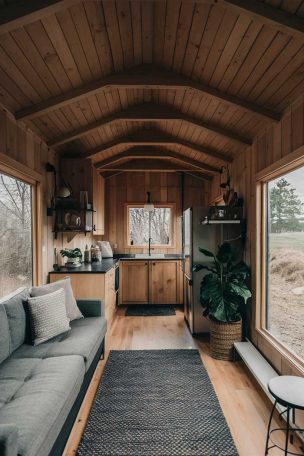In today’s fast-paced world, the allure of minimalism has never been stronger. It’s not just about decluttering your space; it’s a holistic approach to life that can bring clarity, purpose and a sense of freedom.
Let’s dive into the world of minimalism and explore how you can transform your life, one step at a time.
Foundations of Minimalism
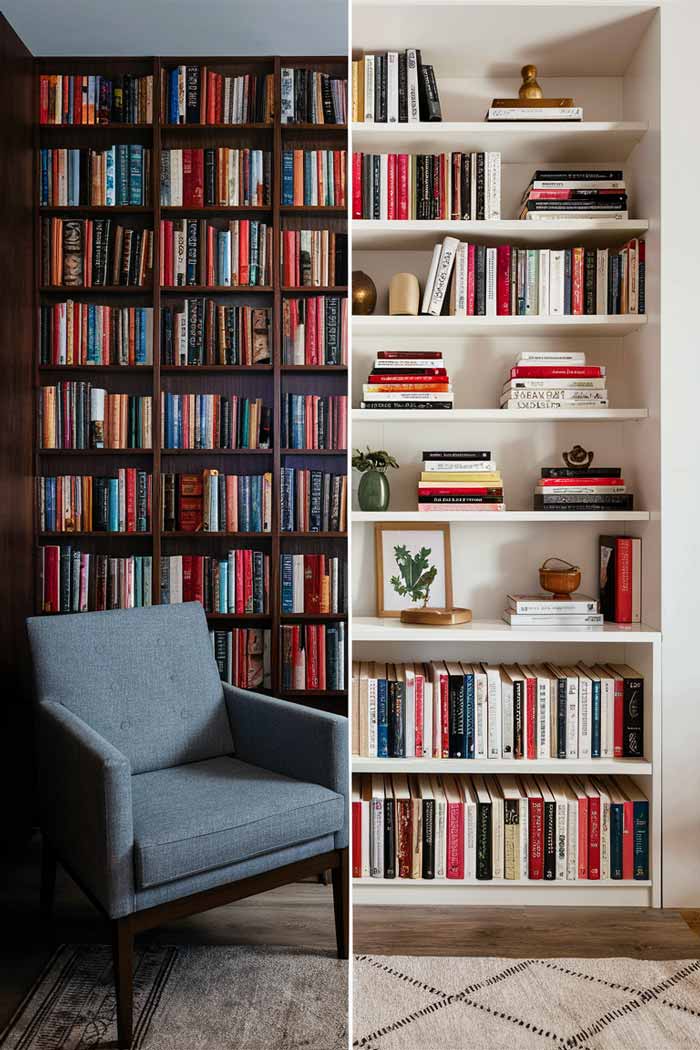
1. Identifying Your Priorities
The journey to minimalism begins with a crucial step: identifying what truly matters to you. It’s about peeling back the layers of societal expectations and discovering your core values.
Start by taking a quiet moment to reflect on your life. What brings you genuine joy? What activities make you lose track of time? These are clues to your true priorities. Try this exercise:
- Grab a notebook and jot down everything that’s important to you.
- Now, challenge yourself to narrow it down to your top 3-5 priorities.
- Look at your daily activities. Do they align with these priorities?
Remember, this isn’t about judging yourself. It’s about gaining clarity. Once you’ve identified your priorities, you’ve got a compass to guide your minimalist journey.
2. Setting a Decluttering Schedule
Decluttering isn’t a one-and-done deal. It’s an ongoing process that becomes easier and more rewarding over time. The key? Consistency.
Create a decluttering calendar that works for you. Maybe you prefer tackling one room per season, or perhaps a monthly deep-dive suits your style. Here’s a simple approach:
- Divide your home into zones (e.g., kitchen, closet, office).
- Assign each zone to a specific month or season.
- Break down each zone into manageable tasks.
- Set realistic timelines – Rome wasn’t decluttered in a day!
Pro tip: Start small. Even 15 minutes a day can make a big difference over time. The goal is to make decluttering a habit, not a herculean task.
Minimalist Habits for Daily Life
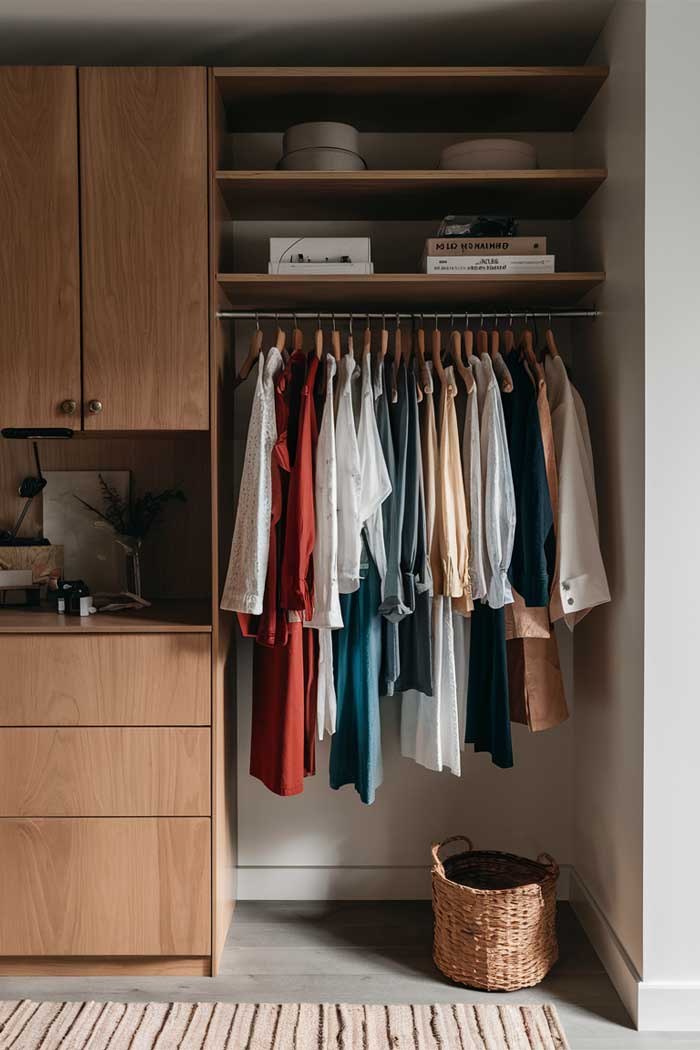
3. Thoughtful Consumption
In a world of instant gratification and one-click purchases, thoughtful consumption is a revolutionary act. It’s about breaking the cycle of mindless buying and reconnecting with what you truly need and value.
Try implementing the 24-hour rule: When you’re tempted to buy something, wait 24 hours before making the purchase. Often, you’ll find the urge passes. For bigger purchases, ask yourself, “Will I still need or want this a year from now?”
Here’s a pro tip: Calculate the cost per use. That expensive coat might seem like a splurge, but if you’ll wear it 100 times over several years, it could be a better investment than cheaper alternatives that wear out quickly.
4. Capsule Wardrobe Strategies
A capsule wardrobe is like a minimalist’s secret weapon. It’s about curating a small collection of versatile pieces that you love, and that work well together. Here’s how to create yours:
- Define your personal style in 3-5 words (e.g., “classic, comfortable, earthy”).
- Choose a color palette that suits you and allows for easy mixing and matching.
- Aim for 30-50 pieces total, including shoes and accessories.
Remember, the goal isn’t deprivation – it’s liberation. A capsule wardrobe frees you from decision fatigue and helps you develop a signature style.
5. Quality Over Quantity
In minimalism, less is more – but that “less” should be the best you can afford. Investing in quality items might cost more upfront, but it pays off in the long run.
Research brands known for durability. Look for timeless designs and high-quality materials. And don’t forget about multi-functional items – a good leather tote can serve as a work bag, gym bag, and weekend carry-all.
When considering a purchase, think about the cost per wear or use. A $200 pair of boots worn 100 times is actually cheaper per wear than a $50 pair that falls apart after 10 uses.
Minimalist Home Design
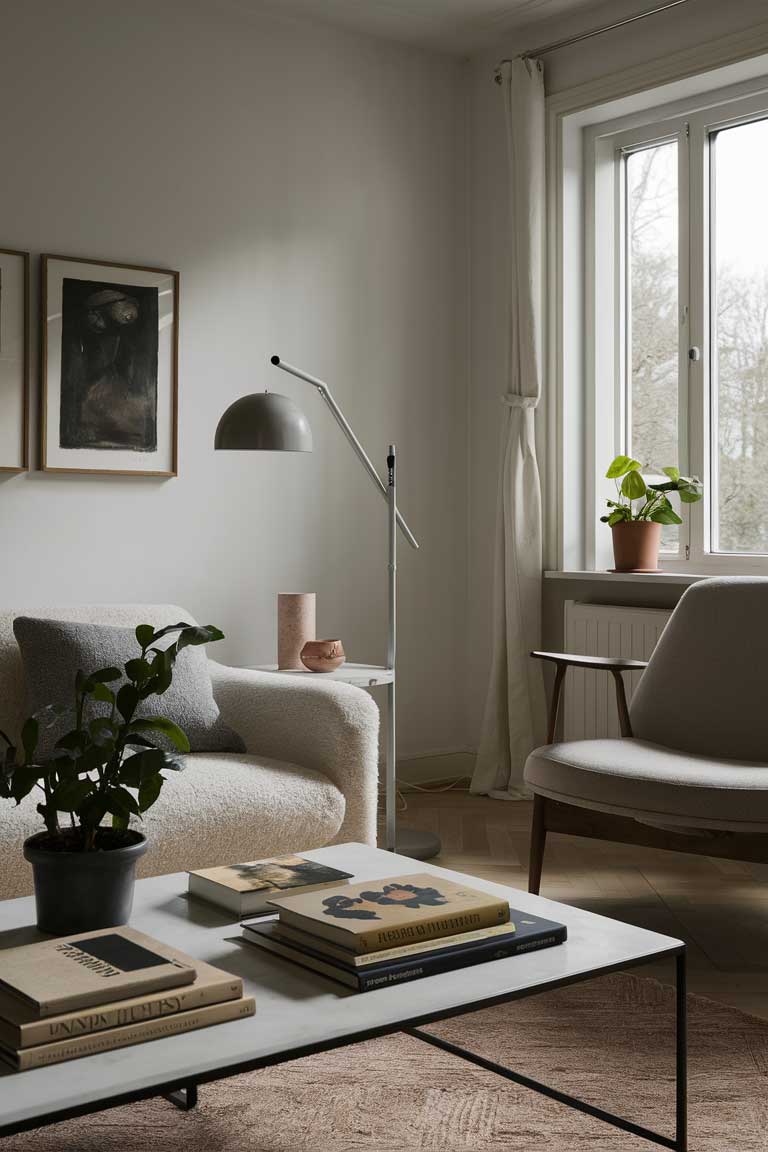
6. Functional Decor
Who says functional can’t be beautiful? In a minimalist home, every item earns its place by being both useful and aesthetically pleasing.
Display everyday items as decor. A well-designed kitchen utensil set can be art. Beautiful cutting boards can lean against a backsplash. Your favorite books can create a colorful, personal touch.
Rotate seasonal items to keep your space fresh without adding clutter. And don’t be afraid of negative space – it’s not empty, it’s breathing room for your eyes and mind.
7. Creating Minimalist Zones
Feeling overwhelmed? Start small. Choose one area – maybe your nightstand or entryway – and transform it into a minimalist haven.
Clear everything off, clean thoroughly, and then thoughtfully replace only the essentials. Take before and after photos to track your progress. You’ll be amazed at the difference, and it might just inspire you to tackle bigger spaces.
Financial Minimalism
8. Budgeting for Simplicity
Minimalism isn’t just about stuff – it’s about simplifying all aspects of life, including finances. The 50/30/20 rule is a great place to start: 50% of your income for needs, 30% for wants, and 20% for savings and debt repayment.
Try tracking your expenses for 30 days. You might be surprised where your money is really going. Use this information to identify unnecessary spending and redirect it towards your priorities.
Automate your finances where possible. Set up automatic transfers for savings and investments. It’s like putting your financial life on autopilot – less stress, more progress.
9. Subscription Audit
Subscriptions can be sneaky budget-busters. Take an hour to list all your subscriptions and their costs. Be thorough – check your bank and credit card statements for the past few months.
Now, be ruthless. Cancel anything you’re not using regularly. For services you want to keep, see if there are better deals available. Many companies offer discounts if you’re willing to pay annually instead of monthly.
Remember, every dollar you save on unnecessary subscriptions is a dollar you can put towards your true priorities.
Digital Minimalism
10. Reducing Digital Clutter
Our digital lives can be just as cluttered as our physical spaces. Start with a monthly app purge. Delete anything you haven’t used in the past month.
Organize your remaining apps into folders based on function. And here’s a challenge: limit your home screen to essential apps only. You might be surprised how this small change reduces mindless phone checking.
11. Mindful Technology Usage
Technology should be a tool, not a tyrant. Set specific “no-phone” times daily, like during meals or the first hour after waking up.
Try using grayscale mode on your phone. It’s amazing how much less appealing endless scrolling becomes when it’s not in vibrant color.
Enable “Do Not Disturb” mode during focused work periods. Your concentration (and stress levels) will thank you.
Minimalist Lifestyle Experiments

12. The One-Box Challenge
Ready for a mini-adventure in minimalism? Choose one box or area in your home to declutter completely. Sort everything into three piles: keep, donate, and discard.
As you go through this process, pay attention to your thoughts and feelings. Do you feel lighter as you let go of things? Anxious? Relieved? These insights can guide your broader minimalist journey.
13. Surface Clearing Exercise
Choose one surface in your home—a desk, a kitchen counter, a dresser top—and clear it completely. Find new homes for everything or discard what you don’t need.
Keep only the bare essentials on this surface for a week. Notice how it affects your mood and productivity. Does a clear surface help clear your mind?
14. Minimalist Recreation
Challenge yourself to plan a zero-cost weekend activity. Explore free local attractions, go for a hike, or have a picnic in a park.
Get creative with what you have. Can you make a fun game using common household items? It’s amazing how resourceful we can be when we step away from consumerism.
Minimalism and Relationships
15. Simplifying Social Obligations
Minimalism isn’t about becoming a hermit – it’s about making space for what truly matters, including relationships. Evaluate your social commitments. Do they align with your priorities?
Practice saying “no” to invitations that don’t excite you or align with your values. It’s not rude; it’s honest. This frees up time and energy to deepen connections with the people who matter most to you.
16. Minimalist Family Activities
If you have a family, bring them along on your minimalist journey. Create a family game using common household objects – it’s a great way to spark creativity and have fun without buying new things.
Implement a “one in, one out” rule for toys and belongings. When something new comes in, something old goes out. This helps maintain balance and teaches valuable lessons about mindful consumption.
Consider giving experiences instead of material items as gifts. A day trip, a cooking class, or tickets to a show create memories that last far longer than most physical presents.
Conclusion: Embracing Long-Term Minimalism
Minimalism isn’t a destination; it’s a journey. It’s about continuously reassessing what adds value to your life and letting go of the rest. As you progress, you’ll likely find that the benefits extend far beyond a tidy home. Many people report feeling less stressed, more focused, and more content as they embrace minimalism.
Remember, minimalism is not a one-size-fits-all approach. It’s about finding what works for you and your lifestyle. Be patient with yourself, celebrate small victories, and keep your focus on the life you want to create.
As you continue on your minimalist journey, keep revisiting your priorities. They may evolve over time, and that’s okay. The beauty of minimalism is that it gives you the flexibility to adapt and grow.
So, are you ready to simplify your life and focus on what truly matters? Your minimalist adventure starts now. Happy decluttering!

